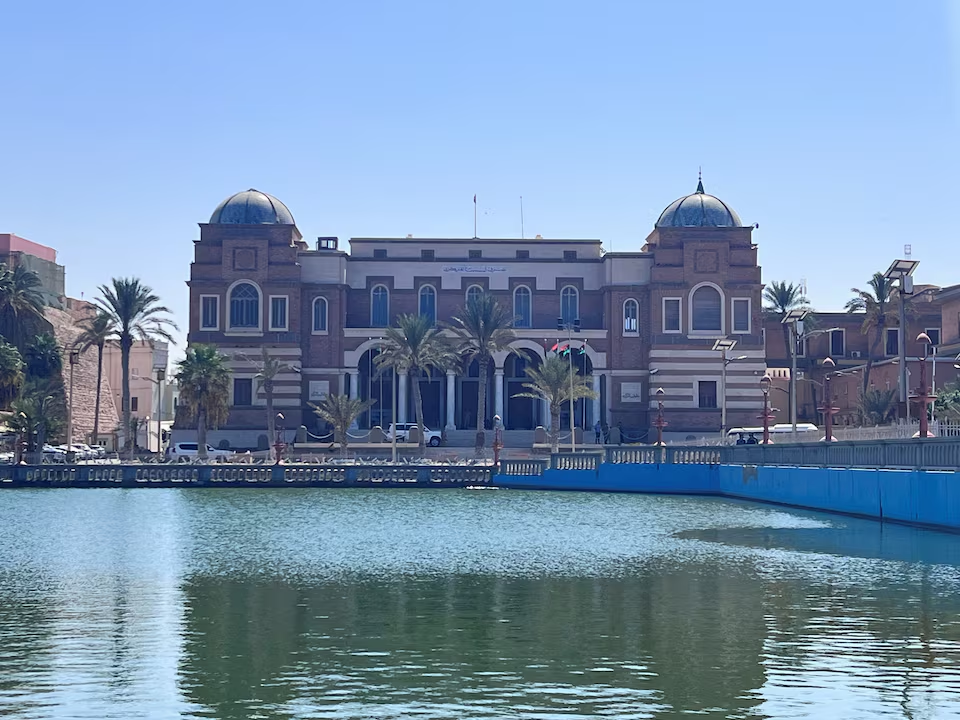Here is a timeline chronicling Libya’s years of chaos and division:
2011 – Revolt and civil war
An uprising against Muammar Gaddafi’s four-decade rule rapidly spreads, becoming an armed revolt aided by NATO airstrikes. Gaddafi is ousted in August and killed in October by rebels as flees his hometown.
2012 – Missed opportunities
A rebel council holds elections for an interim General National Congress which creates a transitional government. True power lies with an array of local armed groups.
Islamist militants gain ground and attack the U.S. consulate in Benghazi, killing the ambassador.
2013 – Growing divisions
Armed groups are ever more powerful, besieging government buildings and forcing the congress to bow to their demands. The body is increasingly divided and trust is ebbing as it seeks to extend its 18-month term and delay elections.
2014 – East-West schism
The congress rejects the results of an election to a new parliament – the House of Representatives (HoR) – and sets up a government that is backed by armed groups in the west.
The newly elected parliament moves from Tripoli to the east in support of a rival government backed by Khalifa Haftar, a former general who has brought together several armed factions as the Libyan National Army. Libya is now split between warring administrations in east and west.
2015 – Islamists on the march
Islamist groups take advantage of the chaos and Islamic State seizes the central city of Sirte in February.
fleeing conflict in his home country, which is grappling with jihadist insurgents.
In December, the warring parliamentary bodies sign the Libyan Political Agreement to set up a new transition under a Government of National Accord.
The agreement confirms the HoR as Libya’s parliament but gives members of the congress a new role as an advisory second chamber – the High State Council.
2016 – Islamic State driven back
The HoR rejects the new government as it takes office in Tripoli, entrenching Libya’s east-west divide. Western armed factions eventually take Sirte from Islamic State as Haftar fights militants in Derna and Benghazi and seizes the so-called oil crescent region of central Libya.
2017-18 – Chaos
Fighting intensifies around the country as armed groups in the west battle for Tripoli and major factions fight Islamist militant groups around the country. New peacemaking efforts quickly fall apart.
2019 – Haftar attacks Tripoli
Haftar drives his LNA through southern Libya, bringing most remaining oil fields under his control. In April, as the U.N. secretary general flies into Tripoli for peace talks, Haftar launches a surprise offensive against the capital, taking Sirte en route. His assault is backed by the UAE, Egypt and Russia.
Western Libyan armed groups come together to support the Tripoli government with help from Turkey, their alliance bolstered by a deal on maritime borders that angers Egypt and Greece.
2020 – Ceasefire
Turkey openly sends troops to support Tripoli and Haftar’s offensive collapses. As his forces pull back, evidence of atrocities is found in the town of Tarhuna. The sides agree a formal ceasefire and the U.N. convenes Libyan politicians and civil society in Tunis for a new peacemaking effort that aims at holding national elections the following year.
2021 – A failed election
The eastern and western factions all accept a new Government of National Unity (GNU) and Presidency Council, meant to oversee elections in December. But the HoR in the east and the HSC in the west cannot agree on a new constitution or rules for the vote and the election falls apart at the last minute.
2022 – Standoff
Both parliamentary bodies now say the unity government has lost its legitimacy but the prime minister refuses to quit. The HoR in eastern Libya again appoints a rival administration, but it fails to enter Tripoli leaving the unity government still in control but the political standoff unresolved.
Groups in eastern areas controlled by Haftar
2023 – Paralysis
As efforts to end the impasse stalled, the major players worked to consolidate their positions.
The catastrophic flood that hit Derna in the east in October, when two poorly maintained dams collapsed in a storm destroying much of the city, underscored the havoc caused by 12 years of chaos and division.
2024 – New crisis
Veteran Central Bank of Libya head Sadiq al-Kabir is in increasing conflict with the GNU over state spending. In August Presidency Council chief Mohammed al-Menfi sacks Kabir, a move opposed by the HoR and Haftar in the east prompting an oil shutdown that impacts global energy prices.

